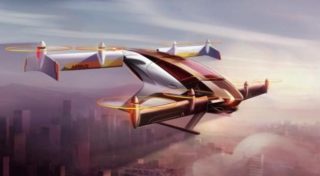
As we’ve noted many times in this space over the years, flying cars are a fairly impractical solution to a problem. Most every flying car project that’s underway continues to take investors’ money and delay the rollout.
Local communities aren’t going to allow people to use the highway as a runway, and swapping congested roads for congested skies isn’t the answer to anything.
But now Airbus has announced it is working on a flyable car, The Telegraph reports today.
CEO Tom Enders told a technology conference in Germany that it planned to test a prototype by the end of the year.
By 2021, he said, a vertical takeoff vehicle could be in production.
“One hundred years ago, urban transport went underground, now we have the technological wherewithal to go above ground,” Enders said.
He said the CityAirbus vehicle could be deployed without many regulatory changes, although he didn’t say — or at least The Telegraph didn’t report — how that would be accomplished.
Meanwhile, other transportation experts see the solution to congestion on terra firma.
They just need to figure out how to make buses “sexy”, the Boston Globe reports today.
“Bus riders who are transit-dependent are still treated as captive,” said Penn Loh, a longtime transit activist who teaches at Tufts University. “They are stuck on the system, they don’t have another choice, and they are the lowest priority.”
To start with, many riders think the lowly image of the bus is often well-deserved: the busiest lines can be loud, slow, and offer a jostling ride that is light on comfort.
The bus’s reputation as the transportation of last resort has deep roots.
Many less wealthy neighborhoods — where households are less likely to have cars — don’t have as many subway and commuter rail stops, leaving buses as the only mass transit option. According to demographic data from 2008, the most recent information available, MBTA buses and trolleys served the highest percentage of low-income riders, followed by subways, then commuter rail and ferries.
The primacy of the car as a powerful symbol of status and freedom has also hurt the image of the bus, advocates say.
“We live in a culture that glorifies automobiles,” Loh said.
